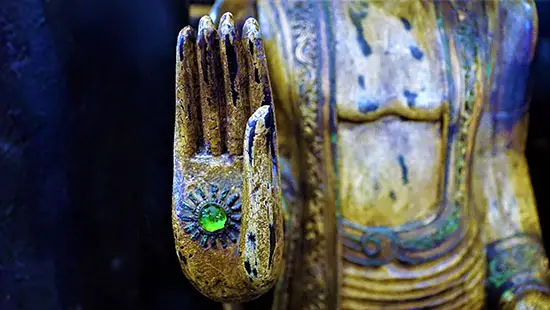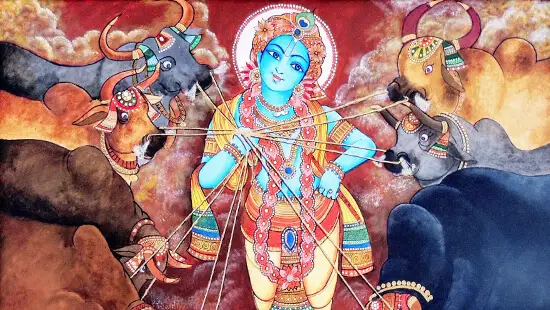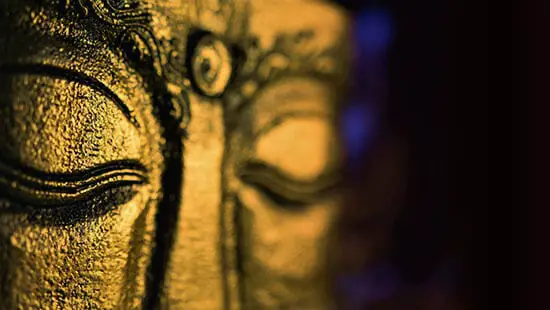यदा यदा हि धर्मस्य ग्लानिर्भवति भारत।अभ्युत्थानमधर्मस्य तदात्मानं सृजाम्यहम् ॥ परित्राणाय साधूनां विनाशाय च दुष्कृताम् ।धर्मसंस्थापनार्थाय सम्भवामि युगे युगे ॥ This shlok from Shrimad Bhagvat Geeta has it all about the reason for incarnation of the Supreme God. It keeps reminding us the promise almighty has given that he would be saving us from the emerging evil powers whenever we humans won’t be able to fight it. Dashavatar serves as a chronicle of how, as what and why would ‘He’ descend!
We are living in an era having a strong influence of the Western culture. Being born as a Hindu and having a soul that belongs to Sanatan Dharma, I personally feel it unseemly of the Hindu families where they don’t have time or any inclination towards introducing their kids to the ideas about what Hinduism has blessed us with.
Vedas and Puranas
We all know that Vedas are the ultimate source of knowledge when one wants to know about Sanatan Dharma and Hinduism. But, Vedas are not that easily intelligible to all. And one more thing you’d also agree that if one wants to learn something, it’s better to initiate from childhood, wouldn’t you?
Hinduism has been very reflective since its origination. On one hand it has Vedas that help rational minds to acquire ultimate knowledge, at the same time it has stories assembled in texts called Puranas that can help common people to understand and get familiar with different deities and their roles in Nature or can say in sustaining life on this planet.
![]()
Puranas are believed to be written by Maharshi Ved Vyas. There are 18 main Puranas containing over 4,00,000 verses on various topics such as medicine, astronomy, cosmogony, cosmology, mineralogy, folk tales, grammar, pilgrimages, temples, theology, humour, love stories, and philosophy as well as the genealogies of gods, goddesses, kings, heroes, sages and demigods.
Trimurti – Brahma, Vishnu and Mahesh
Before I begin telling the stories of various avatars, let’s begin with some basic ideas all of us must be knowing.
![]()
The cosmic functions of creation, maintenance and destruction are represented as a trinity of deities known as Trimurti. The trio of these supreme divinity of Brahma- the creator, Vishnu- the preserver and Lord Shiva, here called Mahesh- the destroyer symbolises the cyclical nature of our existence from birth, preservation, destruction and the following regeneration.
Now, being the protector, lord Vishnu has to perform these main functions of protecting the righteous, eliminating the evil and finally re-establishing dharma. As most of the religions are meant to give us hope, courage and patience, it becomes necessary to create or give the examples of some heroes or can say the saviours that people do believe in and can look up to in grave needs as well. So, in order to sustain or preserve the universe, and for blessing Brahma’s creation on Earth with happiness and goodness, also for saving them from evil powers, Lord Vishnu descents on Earth in various forms. These are called Avatars!
Not only Vishnu but also Shiv, Brahma, Ganpati, Devi (goddess) have taken various forms as Avatars to sustain or establish the cosmic order. In short, ‘Avataran’ literally means Gods coming to earth whenever dharma is in danger and the wicked or evil forces grow powerful. Supreme deities transform themselves to show the right path of dharma suited to changing times.
![]()
There are various types of Avatars (total 6), but here I intend to help anyone understand this so, not going for the detailed descriptions of all of those. Yet, we can say that Lord Vishnu has appeared as Anshavatar (अंशावतार) and Poornavatar (पूर्णावतार).
In Hinduism, it is said that one who possesses all the 64 divine qualities is said to be Bhagwan or Lord. So, as the names suggest an Anshavatar is ‘Ansha’ + ‘Avatar’ has partial manifestation of the attributes of that supreme deity. Here the portion of all the virtues the avatar possesses is also mentioned in Hindu scriptures.
An Anshavatar has 1/4th of the divine virtues than a Bhagwan has i.e. 16 kalas or qualities out of 64. And from this you must have understood that a Poornavatar i.e. ‘Poorna’ + ‘Avatar’ contains all the 64 divine qualities.
As an avatar, Shree Krishna has all the 64 attributes of Lord Vishnu i.e. Vishnu Tattva.
![]()
Puranas are written thousands of years ago and also are written over a long period of time so, there’s much complexity while we talk about the number of avatars. Each of the Purana has mention of various avatars of Lord Vishnu, but as per the need of time the avatar in one purana may not be included in the other. So, here we are including those 10 avatars which are mostly common in a couple of puranas.
These 10 (दस) – avatars (अवतार) are cumulatively known as the ‘Dashavatar’.
List of 10 avatars – Dashavtar
Varying per region and tradition, different versions of the list of Vishnu’s avatars exist. The Agni Purana, Padma Purana, Garuda Purana, Linga Purana, Narada Purana, Skanda Purana and Varaha Purana mention the common Dashavatar list including the following,
Matsya: The very first of all the 10 primary avatars where Lord Vishnu descends as a Fish.
Kurma: Kurma in Sanskrit means ‘A tortoise’, the incarnation of Shree Vishnu as a tortoise is Kurma avatar.
Varaha: Varaha stands for ‘A boar’ in Sanskrit, the third avatar where Shree Hari Vishnu saved the Earth from drowning taking the form of a boar.
Narasimha: One of the most fierce avatars of Bhagvan Vishnu. As the name suggests where Nar (नर) stands for a man and Simha (सिंह) stands for a lion, here by taking the form of a half man – half lion, God protected dharma.
Vamana: Shree Hari Vishnu appeared as a dwarf Brahmin where he stops evil getting a powerful hold on the Earth.
Parashuram: Parashuram in Sanskrit literally means Lord or Ram with an Axe. To help Mother Earth get rid of sinful and destructive monarchs that neglected their duties, Lord Vishnu incarnated as a warrior brahmin.
Shree Ram: The seventh avatar and one of the most revered avatars of Bhagvan Vishnu where he was born as a prince yet faced difficulties and by fighting the evils re-established dharma.
Shree Krishna: The most worshipped incarnation of Shree Vishnu, the eighth avatar is considered the Supreme God in his own right.
Balaram or Jagannath or Vithoba or Buddha: According to varied faith and ideologies, all 4 of these are considered to be the ninth avatar of Vishnu in different regions of India.
Kalki: It is the prophesied tenth incarnation of Shree Vishnu. He will be an ascetic prince, riding a white horse with a sword in his hand who’d bring an end the Kali Yuga.
Most puranas agree on the avatars being in the same order till the 8th avatar i.e. the Krishnavatar. Yet we can notice, there are many names included when we talk about the ninth avatar of Vishnu.
This is because, with times changing, the new scriptures were introduced and the newly emerging traditions like Vaisnavism, Bhagvatism during the Gupta period (Overpowering Mahayan Budhdhism), Warkari faith etc. had considered their regional, prominent personalities as the preeminent, godlike or as God of their bhakti and devotion. So, as the region changes, the belief about the ninth avatar of Shree Vishnu also differs.
Yet, the most scriptures have accepted Buddha as the ninth avatar. And we can accept this too as Buddhism has its roots grown from Hinduism. This I can write knowing that, certain Buddhist teachings appear to have been formulated in response to ideas presented in the early Upanishads – in some cases concurring with them, and in other cases criticising or re-interpreting them.
That’s the beauty and also the strength of Hinduism that it open heartedly allows anyone to defy and re-interpret our doctrines as per once choices; no other religion in the world has gotten this immensity of acceptance, won’t you agree?
![]()
People who consider Dashavatar as only stories must examine closely that Dashavatar has also been interpreted to be reflective of modern Darwinian evolution, as a description of the evolution of consciousness. Because each of the avatars is inter related and resembles Darwin’s theory of evolution. (I feel it really lame of us to believe in Darwin rather than our own scriptures written by OUR ancestors!)
We have been a country of believers so, the way of teaching everything has always differed from the rest of the world. We’ve woven hope, faith and reverence in almost every aspect of life. Whether it’s about treating the other beings regardless of their being animals, birds, insects or any element of Nature or it’s about looking on to other human beings notwithstanding their different personal faiths. Thus, the stories Dashavatar has told us are eternal and will be the primary source of our knowledge, leading us towards our spiritual growth from a tender age.



Hey Swati,
This article is very interesting and I would say much needed. In fact yesterday only I was searching for some Puranas and there were not a single article having holistic approach towards this point.
Glad to see you exploring this subject in depth in such interesting. Always pleased to read your posts.
Keep up the good work ???
Thanks for this encouragement. I try to stick to my roots, rather trying to get closer to them. Readers like you receive and appreciate these efforts. So, writing these articles is a win-win condition for me I believe. Thank you so much!